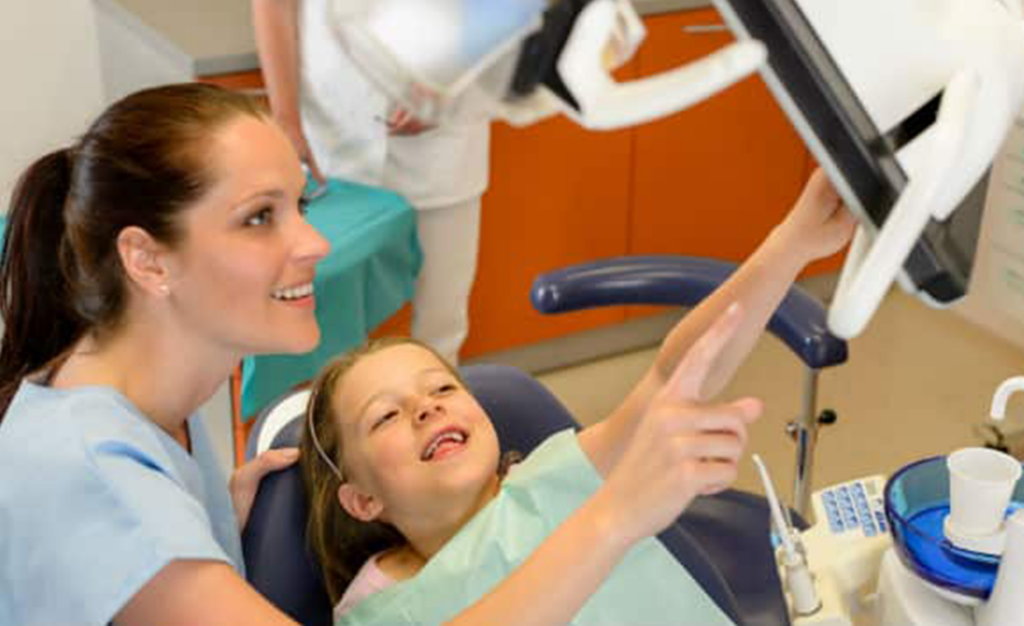
Once your child’s first teeth erupt, it’s time to visit the dentist. You may think these baby teeth don’t really matter, because they will eventually go, and the adult teeth are more important. However, this couldn’t be further from the truth. You can set your child on a course of good dental health by bringing him or her to the dentist right from the sign of the first tooth.
Statistics show that by three years of age, as many as 30 percent of children have had tooth decay. This can be very dangerous for the developing adult teeth and is completely preventable. Our specialists can see early signs of disease. A child’s risk of decay may also depend on the shape of the tooth, the enamel and saliva.
During early childhood, a good diet is essential for overall good health. To get the best nutrition from food, a child needs to be able to chew properly. Healthy teeth also help the child learn to speak clearly. Many of the treatment options that are available to adults are also available to children.
During a child’s first visit to the dentist, the parents may have a lot to learn. At this time, parents can talk to the dentist about:
• How to help their infant or toddler have good oral heath
• What is the proper use of fluoride
• What to do about finger or thumb sucking
• What are the milestones for teething
• How does diet effect oral health
• How to brush a child’s teeth
After the first checkup, parents should have a good idea of what is good oral care for their young child. If the child doesn’t fall asleep while sucking a bottle of milk or juice, doesn’t eat in the middle of the night and has transitioned from the bottle to a cup, it may be enough to wait one year before the next visit to the dentist. By age two, children should visit the dentist every six months just as is recommended for adults.
It helps a lot to visit a dentist who knows how to treat children. Our specialists know how to help children relax, and they have the patience to answer all of your child’s questions.
By taking their children to the dentist when the first teeth begin to arrive, parents are putting their children on course for keeping their teeth all their lives. Our specialist may be able to see oral problems in the making and help stop problems before they become serious issues that cause pain and require major treatment.
Contact Blue Turtle Dental today to make an appointment. We look forward to answering any questions you may have.

